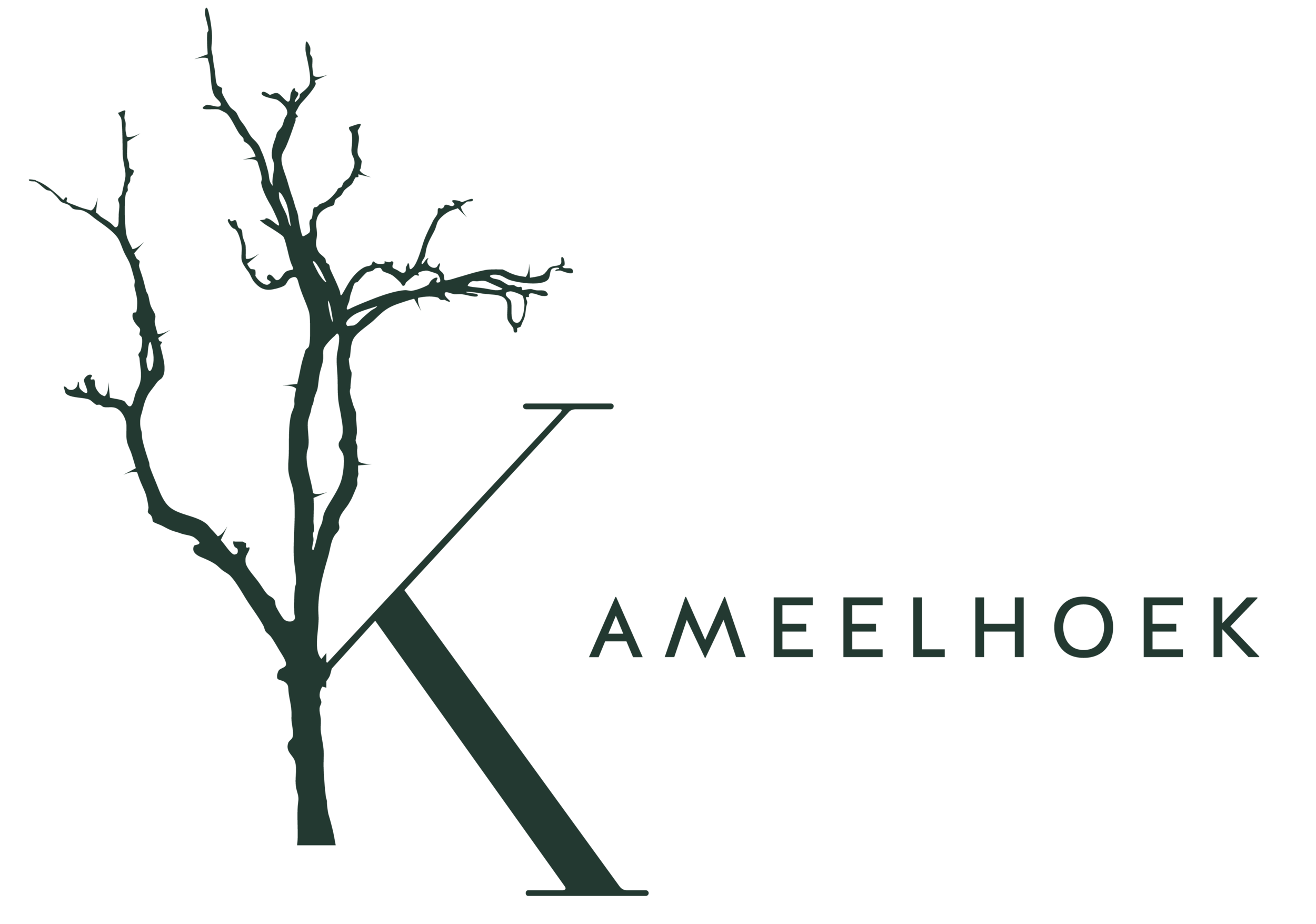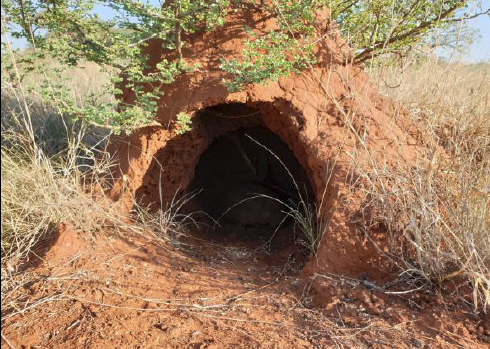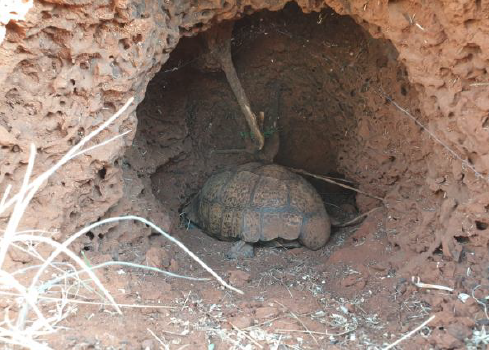Leopard Tortoise
Image Credit · Eye Poetry Photography
Leopard Tortoise : Family: Testudinidae; Genus: Geochelone; Species: pardalis
An afternoon horseback safari in the central parts of Kameelhoek ensured another spectacular and special sighting. Halfway into our ride, you could feel the heat of the day cooling as the sun was slowly setting. We passed a section just south of the Kopjes (two large conical hills, overlooking the Kameelhoek territory) and spotted a large leopard tortoise hiding within an old excavated termite mound. Almost passing by, we decided to pause for a moment and investigate. It was amazing to see a somewhat prehistoric animal comfortably making use of the remainder of an Aardvark’s (Orycteropus afer) hard work. Sleeping soundly within the cool enclosed burrow, the tortoise was able to escape the harsh midday sun (Figures 1 & 2).
Figure 1. Excavated termite mound.
Figure 2. Leopard tortoise finding refuge within the termite mound
Aardvark are known to use their specialised digging capabilities to open up the core of termite mounds. The core of these mounds are home to termite eggs and larvae, which makes up a large part of the Aardvark’s preferred diet. Whilst excavating, the Aardvark seemingly goes about its business prying away at a high protein meal. But unbeknownst to its affect, the Aardvark is reshaping the ecosystem to suit the habitat requirements of a number of smaller, ground-welling animals.
Many animals including bats, cats, civets, jackal, monitor lizards, owls, porcupine and in this case, our leopard tortoise, benefit from the Aardvark action, revealing its importance as an ecosystem engineer(1). Aardvark are careful not to destroy termite mounds, but to only use sections small enough for termite colonies to repair. After spring rains, termites are able to make use of moist soil particles to rebuild their damaged mounds. This ensures the sustainability of termite colonies and the availability of a generous meal for the Aardvark.
Ecosystem engineer – an organism which plays a significant role in creating, maintaining or destroying habitat.



